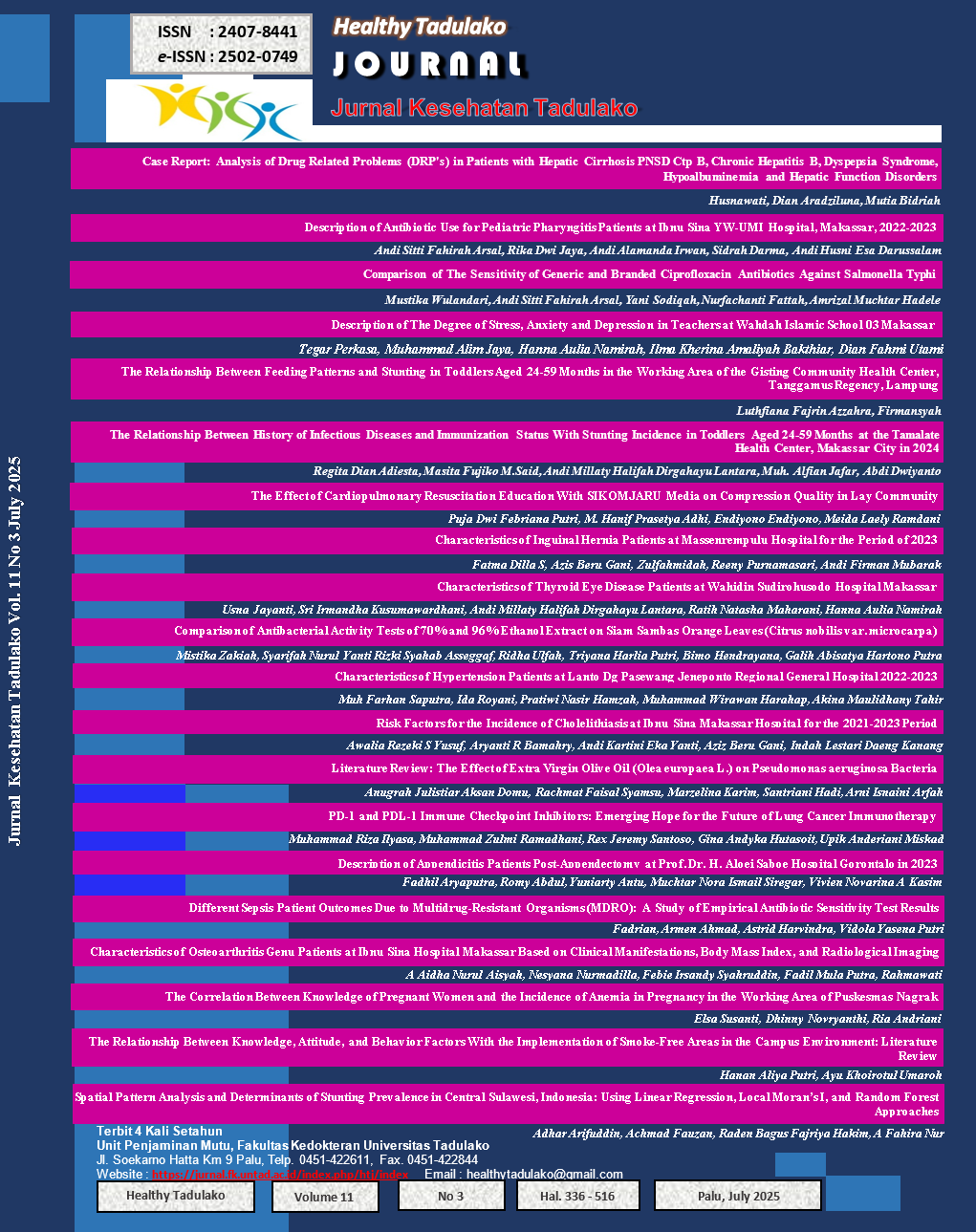The Relationship Between History of Infectious Diseases and Immunization Status With Stunting Incidence in Toddlers Aged 24-59 Months at the Tamalate Health Center, Makassar City in 2024
DOI:
https://doi.org/10.22487/htj.v11i3.1678Abstract
Background: Stunting remains a major nutritional problem in Indonesia, affecting not only children’s physical growth but also cognitive development, academic performance, susceptibility to degenerative diseases, and future productivity. Addressing stunting is therefore essential to improve human resources quality. Objective: This study aimed to analyze the relationship between history of infectious diseases and immunization status with the incidence of stunting in toddlers aged 24–59 months at Tamalate Health Center, Makassar City, in 2024. Methods: This was a quantitative study using an observational analytic method with a cross-sectional design. A total of 68 stunted toddlers were included using purposive sampling. Data collected covered age, sex, nutritional status, history of acute respiratory infections (ARI), diarrhea, and immunization status. Results: Most stunted toddlers were aged 24–35 months (41.2%), female (51.5%), short stature (83.8%), had a history of ARI (58.8%), no history of diarrhea (83.8%), and incomplete immunization (54.6%). Statistical analysis showed no significant association between history of ARI (p=0.174), diarrhea (p=0.124), or immunization status (p=0.096) and stunting incidence. Conclusion: History of infectious diseases and immunization status were not significantly related to stunting incidence in toddlers aged 24–59 months at Tamalate Health Center, Makassar
Downloads
Published
How to Cite
Issue
Section
License
Copyright (c) 2025 Healthy Tadulako Journal (Jurnal Kesehatan Tadulako)

This work is licensed under a Creative Commons Attribution-NonCommercial-ShareAlike 4.0 International License.






